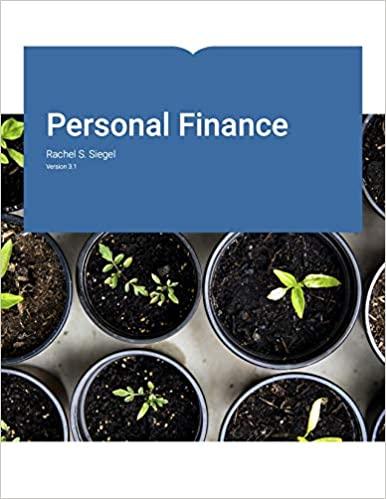Question
Dave is evauluating the merits of a potential investment in a drone manufacturing company. He already owns the land for the facility, but he would
Dave is evauluating the merits of a potential investment in a drone manufacturing company. He already owns the land for the facility, but he would need to purchase and instill the assembly machinery for $240,000. The machine falls into the MACRS 5-year class and it will cost $20,000 to modify it for Dave's particular needs. A consultant, who charged Dave $10,000 for his services, already completed the process of resstructuring the facility for the required zoning and industry standards. The facility requires additional net working capital of $5,000. Drone sales are expected to yield before-tax revenues of $450,000 per year witt the labor costs of $200,000 per year and fixed costs of $175,000 per year. Dave expects the machine to be used for 5 years and then sold for $55,000.
Dave has asked you to evaluate his proposed project, and he has provided you with the following information about the investment.
Dave firm has a target capital structure of 25% debt, 5% preferred stock, and 70% common equity. Its bonds have a 9% coupon, paid semiannually, a current maturity of 20 years, and sell for $1,000. The firm could sell, at par, $100 perferred stock that pays a 5.75% annual dividend, but flotation costs of 4% would be incurred. The firm's beta is 1.25, the risk-free rate is 3%, and the expected return on the market portfolio is 9.4%. The company is a constant-growth firm that just paid a dividend of $2.00, sells for $30 per share, and has a growth rate of 5%. The firms's policy is to use a risk premium of 4% when using the bond-yield-risk-premium method to find the cost of equity. The firm's marginal tax rate is 42%.
In addition to finding the firm's average-risk cost of capital, Dave has also asked you to calculate a risk-adusted cost of capital. He believes that projects's cash flows for years 1 through 5 will increase by 10% in a particularly good market, and the cash flows will decrease by 10% in particularly bad market. He estimates that there is a 15% probability of a good market occurring, 1 25% probability of a bad market occurring, and a 60% probability of an "average" market occurring.
To complete the task of calculating a risk-adjusted cost of capital, you will need to find the expected NPV, its standard deviation, and its coefficient of variation(CV). Dave informs you that his average project has a CV in the range of 1.0 to 2.0. If the CV of project being evaluated is greater than 2.0, 2 percentage points are added to the cost of capital for the evaluation. Similarly, if the CV is less than 1.0, 1 percentage point is deducted from the cost of capital for the evaluation.
In the end, Dave wants to know whether to accept or reject the project. He expects you to make your conclusion using 3 techniques: Discounted payback method, NPV analysis, and IRR analysis.
Throughout your analysis, you are to be as thorough as possiable, documenting all of your work to support your conclusions. To do so, you should include the following calculations:
1.) Dave's WACC for an average-risk project
2.)Annual cash flow estimates for the project (including the initial outylay)
3.) A Risk-adjusted cost of capital for this project
4.) An accept/reject decision based on the above 3 techniques
Step by Step Solution
There are 3 Steps involved in it
Step: 1

Get Instant Access to Expert-Tailored Solutions
See step-by-step solutions with expert insights and AI powered tools for academic success
Step: 2

Step: 3

Ace Your Homework with AI
Get the answers you need in no time with our AI-driven, step-by-step assistance
Get Started


